Learn to Play Guitar
Most people in the world are familiar with the sound a guitar makes. But what sets the different types of guitars apart? Do you need to plug the guitar in? And how do you learn where to place your fingers on the fretboard?
This article acts as an introduction to the guitar, allowing you to quickly gain a basic understanding of the instrument. You will get some good advice on how to get started quickly, and some tips on how to find the right tutor for you.
See all of our qualified guitar teachers here!

Table of contents
The Parts of the Guitar
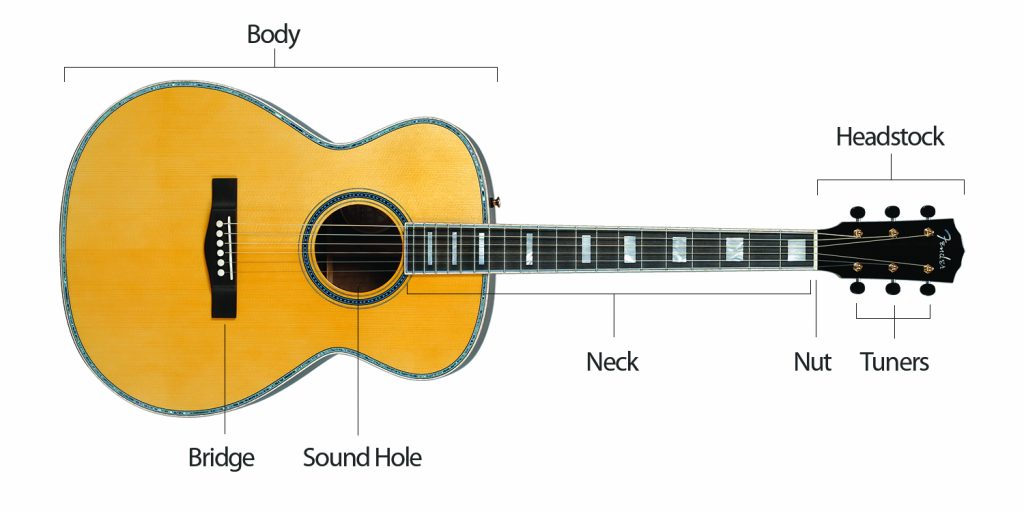
Here is an image displaying the different parts of an acoustic guitar. (These parts all have the same name on an electric guitar too).
The 'frets' are the metal bars that lie across the guitar's fretboard. Pushing down the strings between these changes the tone of the string. This is called fretting. If you are playing a note on the first fret, you should place your finger between the nut and the first fret. From thickest to thinnest (lowest sounding to highest), the strings on a guitar are called E, A, D, G, B and E.
The notes on a string are in the same sequence as they would be on a piano (C-C#-D-D#-E-F-F#-G-G#-A-A#-B). The difference in pitch between one string and the next is one fourth, with the exception of the two thinnest strings. The difference in pitch between these two is a third.
How to Tune Your Guitar
In order to play the common chords - not to mention being able to play with others - the guitar must be in tune. There is a standard tuning which is used in most of the world. It is found by using either a tuning fork or an electric tuner, available as either a handheld unit, a stomp box or as a mobile app. It is also possible to tune the guitar by using a piano, if you know how the notes are laid out.
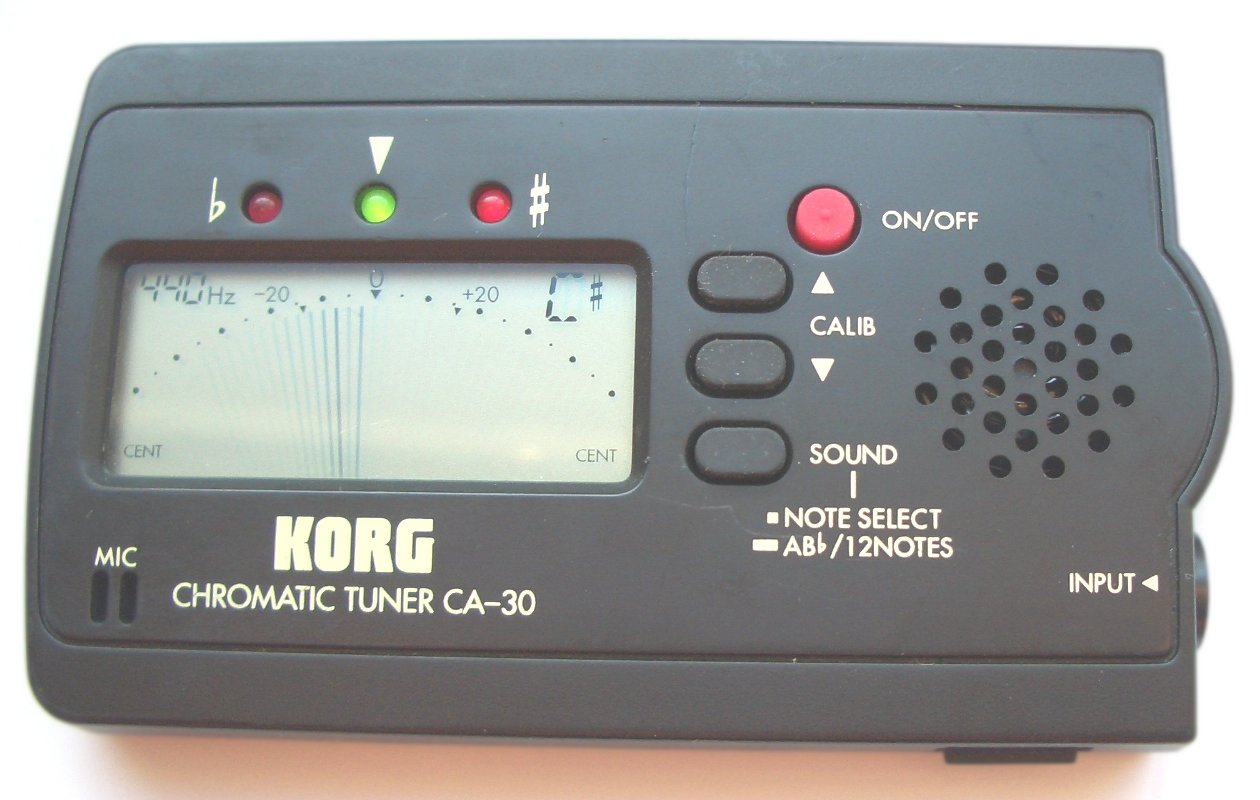
An electric guitar tuner
By twisting the tuning keys (also known as tuning machines or tuning pegs), the pitch of the strings is either raised or lowered as the string is made more tight or more slack. From thickest to thinnest string, the notes should be: E-A-D-G-B-E. Once this is done, the thickest and thinnest strings will play the same note, albeit two octaves apart, meaning that the thickest string will sound much deeper than the thinnest string.
Practicing, Positioning and Warming Up
Before playing or practicing, it is important to always warm up. This prevents straining the muscles, and greatly reduces the risk of getting Tenosynovitis. For this reason it is also important to take frequent breaks when practicing, allowing the muscles to relax. Playing becomes much more comfortable if the guitar is positioned correctly on the thigh while seated, and if the neck is held at an angle which allows the wrist to bend. When playing while standing, it is important to adjust the strap so that the guitar is positioned at the same point on your body as it would be if you were seated. Remember to put down the guitar during breaks, as the weight of the instrument may strain your shoulders.
Fingerpicking and Picks
Fingerpicking and playing with a pick are by far the most common means of playing the guitar. When fingerpicking, either the nails or the fingertips are used to hit the strings, creating a soft, warm and dynamic sound. The pick is a small piece of plastic, used as a substitute for the fingernail. It creates a sound with more volume and precision, and it makes it possible to use a number of techniques which are not possible when fingerpicking. Picks come in many shapes and sizes, and are often very cheap.
Chords
Chords are a grouping of notes which, when played together, sound harmonious. There are several ways to play chords on the guitar, providing a great deal of variety.
Open chords require very few fingers to be used, as the strings that are not fretted (pressed down) are still played. Below you can see diagrams of six very common chords.
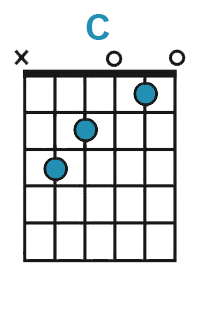
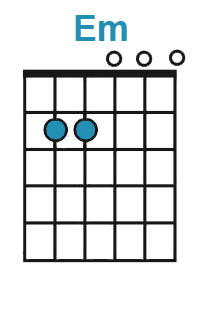

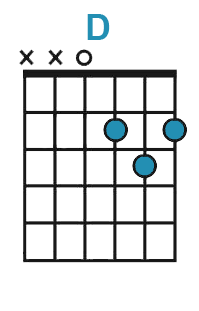
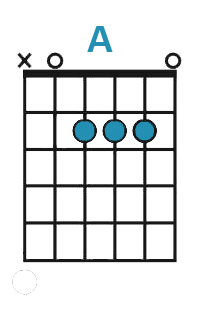

Barre chords are based on fixed fingerings, and can be moved up and down the neck. This makes it possible to play semitone intervals, which is not possible with the open chords. Barre chords require more finger strength, making them a hurdle for many new players, but once they have been learned they are immensely practical and logical.
Scales, Solos and Riffs
A scale is a fixed sequence of intervals between notes, and it can be described as an alphabet for writing melodies. The scale also determines whether the key is major or minor, though it should be noted that although these are the most popular modes, there are many others which have their own sound. Examples of this include the blues scale and the scales commonly used in Indian music. Learning a scale will allow you to know which chords to use with it, and how to improvise over those chords. The more scales you know, the greater your musical vocabulary, so to speak.
A riff is a relatively short rhythmic and melodic figure, which can be played instead of or during chords. Riffs are commonly repeated at fixed points throughout a song, and often function as the hook of a song. A riff is built on the appropriate scale of the song, and is a good basis for learning to improvise and solo.
My First Guitar
There are three main types of guitar to consider when choosing your guitar. Classical guitar, acoustic guitar and electric guitar. Classical guitars have nylon strings as opposed to metal strings, and are said to be good beginner instruments. Acoustic guitars are a slightly different shape to classical guitars and are setup with steel strings. Electric guitars are usually a very different shape to acoustic/classical guitars, with a much smaller body. These too are setup with metal strings. It's useful to figure out with your guitar teacher what type of guitar you want to learn to play before starting your guitar lessons, that way, you can focus in on what kind of styles you want to work with in your guitar lessons. However, the most important thing is to get started! Read more about different types of guitar here.
When you start learning the guitar it is important to find a model which is comfortable for you to play, both seated and standing. Playing guitar becomes much more fun when you have the right instrument, and we recommend that you visit your local music shop and get expert help in selecting the right instrument. This will also prevent you from wasting money on a guitar which may be too large, too small, or unnecessarily expensive. If you choose to find a guitar teacher through MusicTeachers, they will also be able to give you sound advice when choosing a guitar.
Tips for Beginners
Here are some good tips for new guitar players.
1. Practice daily
Practicing for ten minutes every day will yield better results than practicing for one hour once a week. It also helps to strengthen your fingers and build muscle memory. If possible, keep your guitar within reach so you don't have to waste time unpacking it for each session.
2. Build callouses and more finger muscles
The skin on your fingers needs to get used to the pressure of the strings, and it is not uncommon to get sore fingers and perhaps even blisters if your play for too long at a time. On the other hand, if you don't practice frequently enough, you won't build up the necessary callouses.
It is also important that you get used to using your finger muscles without tensing your wrist, forearm, elbow and shoulder. If you start to feel discomfort in your hand or your arm, it is important to either change your position or take a break. In the beginning it may feel like a challenge to build up the necessary hardiness, but it will come quicker than you think if you simply persevere. Anyone can achieve it, regardless of age, build or physical strength.
3. Take care of your guitar
A guitar is a delicate instrument, and deserves its own box or gig bag (A specially made rucksack, made of a thick, protective material). Do not lean it against the wall or place it on the floor. Instead, purchase a guitarstand so that it is secure and within reach.
4. Have extra strings
Always keep at least one extra set of strings in your guitar box or gig bag. When a string breaks it should be replaced immediately, so that the guitar stays in tune and the wood is not warped due to the change in pressure from the strings.
5. Stay motivated
Make sure to play songs that you like, so that practicing does not start to feel like a chore. Make sure to tell your teacher what YOU want to learn, so that you can work together on planning the teaching so that it suits you. There is nothing quite like the feeling of success when you have learned to play one of your favourite songs
Find Guitar Lessons Near You
Do you want to learn how to play the guitar? Maybe you already know, but you want to improve your abilities? We have lots of talented and experienced teachers all over the country. Find a teacher in your city today!
Is your child interested in learning guitar? It is proven that learning a music instrument can be extremely beneficial for your child’s development due to increased concentration, focus and patience, improved cognitive skills and social abilities as well as boosted self-esteem! A good guitar teacher is more than just a tutor for the instrument, they can become your child’s coach as well.
See all of our qualified guitar teachers here!
If you thought this article was useful, you might also find the following interesting…
Who Are We?
The office team of MusicTeachers are all professional musicians and educators. We also believe that we have the best job in the world. We get to spend our day talking to students across the country about how much they love music and we have helped hundreds of people connect with the perfect, professional teacher for them. We'd love to help you too! Please get in touch with us and tell us your story. Call us at 07946125613 or send an email to [email protected]. We can't wait to hear from you!
